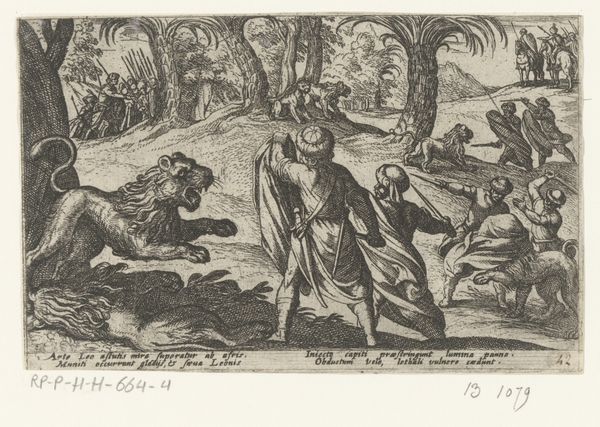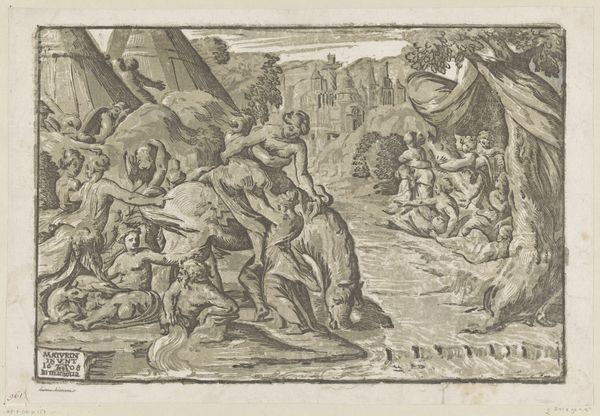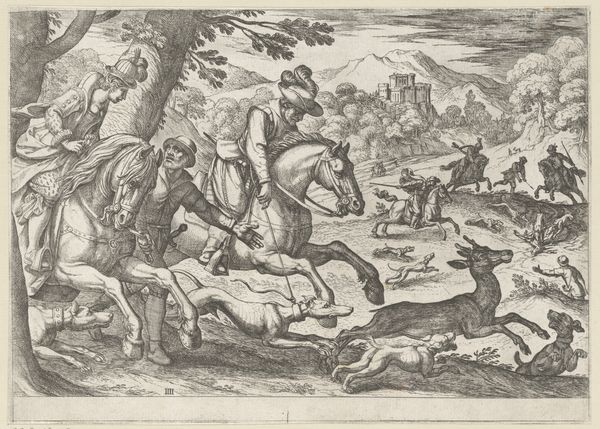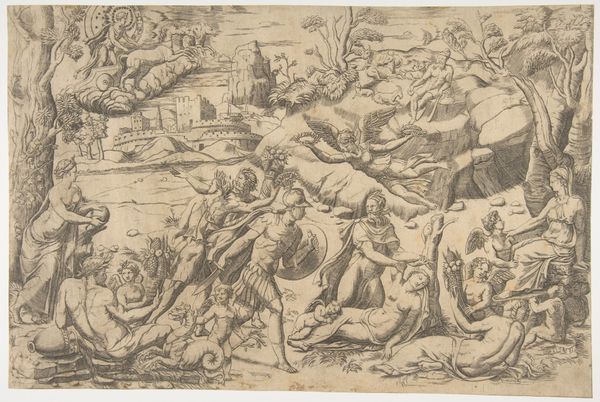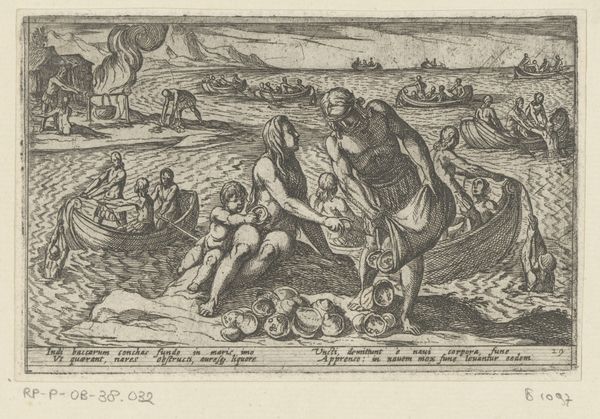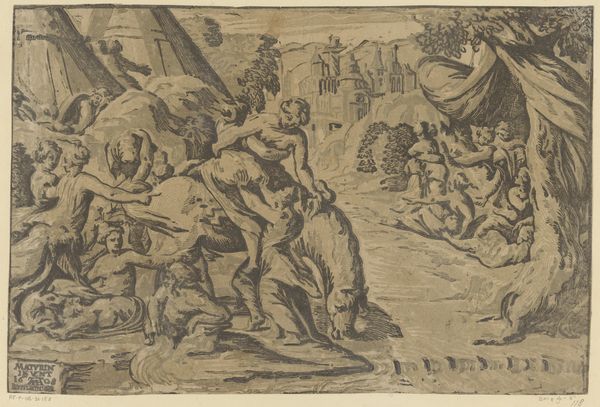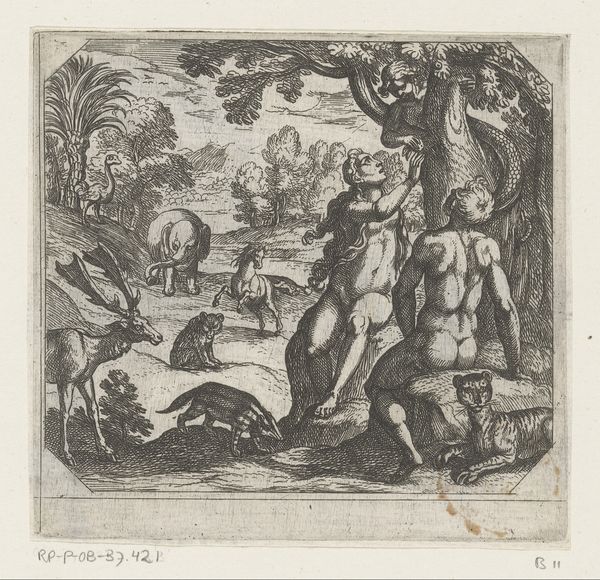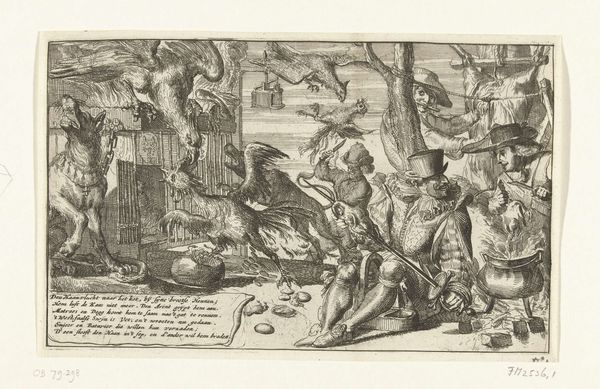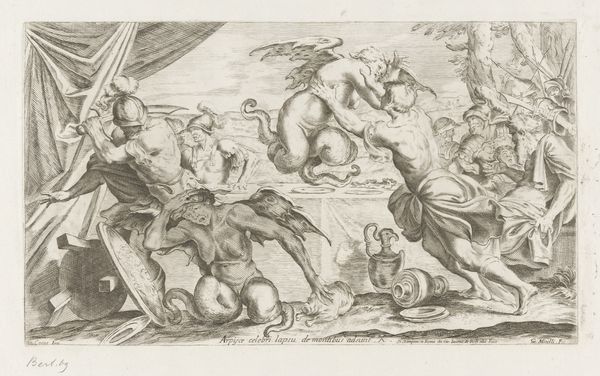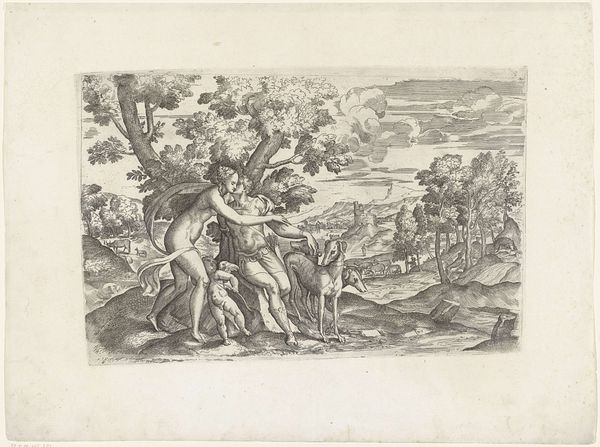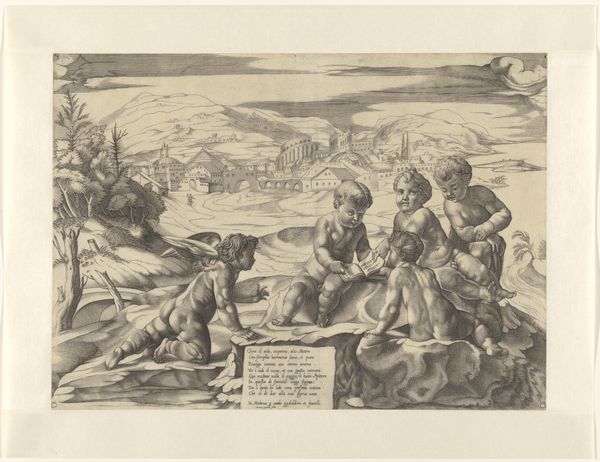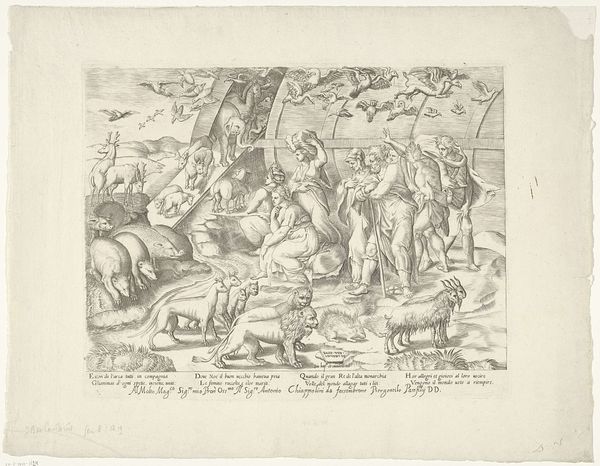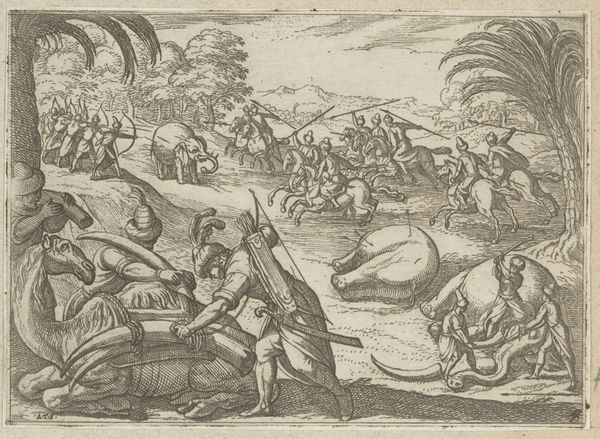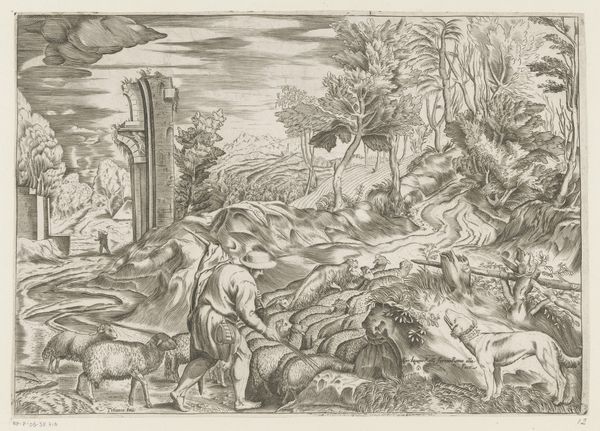
drawing, etching, ink
#
drawing
#
narrative-art
#
pen drawing
#
pen illustration
#
pen sketch
#
etching
#
mannerism
#
figuration
#
ink
Dimensions: height 93 mm, width 147 mm
Copyright: Rijks Museum: Open Domain
Curator: Allow me to introduce “Hunters Catching Monkeys,” an etching in ink by Antonio Tempesta, dating back to 1605. It currently resides in the Rijksmuseum. Editor: My initial reaction? It’s unsettling. The level of detail achieved with etching is remarkable, but the scene itself... There’s a calculated brutality, a sense of deliberate cruelty that is hard to ignore. Curator: Indeed. Tempesta, active in Rome, was known for his detailed depictions of hunting scenes and battles. Looking at the textures, you can appreciate how the artist manipulates the material to create the contrasts and simulate light reflecting from the monkey’s fur and human skin, illustrating the relationship between hunter and hunted, predator and prey, both literally and, one might argue, socioeconomically. The manufacturing and sale of hunting materials were critical to economies in this era. Editor: Precisely. Consider this not simply as a depiction of a hunt, but as a representation of power dynamics. The figures methodically applying what appears to be a sticky substance—presumably to trap the monkeys. These weren't innocent actions—they represent strategies of dominance and control. Furthermore, the engraving medium made this art accessible and repeatable, allowing these ideas about animals (and humans) as resources, objects, and capital, to spread quickly among an early modern audience. The figures in the foreground bathe their eyes in the sticky material while the animals in the back are subject to what may be interpreted as abuse from other captors, evoking the social disparities of early 17th-century societies where labor was subject to abuse. Curator: Agreed. Notice the use of line and the repetition of forms – the curved backs of the monkeys mirroring the bent postures of the hunters, suggesting perhaps an intended connection between human labor and animal behavior. It highlights a system of cause and effect: a continuous cycle of manipulation through extraction, violence, and exploitation. These figures could very easily have become exploited labor on sugar plantations in the “new world”, furthering this extraction cycle of land and living beings. Editor: An observation that really gives pause. This artwork encourages a dialogue about consumption, value, and exploitation far beyond its initial subject matter. It's unsettling, but it's also a mirror reflecting uncomfortable truths about how power and inequality can function through material things and through acts that were completely acceptable at the time. Curator: A disturbing, yet very potent etching. It's a reminder of how intertwined our histories are with our relationships with animals.
Comments
No comments
Be the first to comment and join the conversation on the ultimate creative platform.
